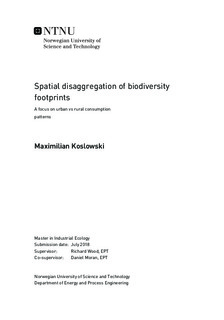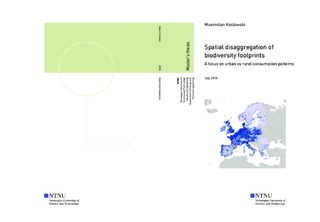| dc.description.abstract | Biodiversity is threatened by diverse pressures. Deforestation, climate change, water stress and other factors contribute to its gradual degradation. Apart from negligible natural sources, main drivers of this development are the consumption and production of goods and services, both domestically and abroad. Modern society, particularly in affluent countries, increases the pressure on the environment via unsustainable lifestyle choices and a lack of appropriate policy responses. An understanding of the influence of socio-economic variables such as urbanisation, income distribution, and household size is therefore important. In this study, we examined the role of selected socio-economic variables regarding environmental impacts associated with European household consumption in the years 2005 and 2010. We applied a multi-regional input-output model, extended by the life cycle impact assessment methodologies LC-Impact and ReCiPe to account for biodiversity losses. The required trade data from EXIOBASE v3.4 was ameliorated with consumer expenditure survey data from Eurostat to allow for the disaggregation of household final demand. We find that urbanity and higher income are sources of higher absolute biodiversity footprints. On the per capita level, the allocation of impacts to the differing degrees of urbanisation is more even and country dependent, although city residents are still slightly more culpable in most countries. The role of income only changes over the years, but not so much across countries. While absolute biodiversity footprints for both reference years as well as 2010 per capita footprints were shown to increase with higher income, 2005 per capita footprints revealed no distinct pattern. The major contributor to reductions in species richness was found to be land use, which was mainly driven by the demand for agricultural products. Most European countries and Europe as a whole were identified as net-importers of biodiversity losses. | |

